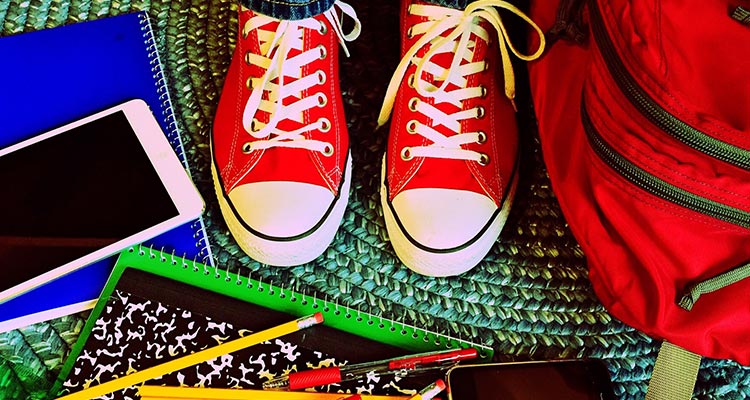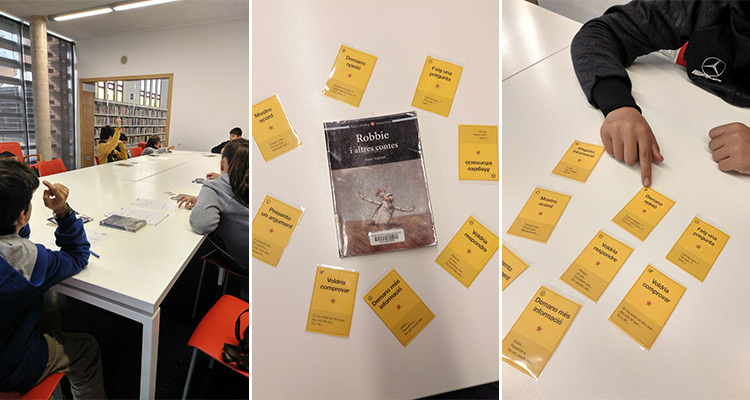

At dothegap, we firmly support the shift from formal, traditional education models towards contemporary models that integrate experiences, teamwork and emotional intelligence, among other things. That’s why we love hearing about education models such as that employed by Les Cinc Sénies Secondary School in Mataró and why we want to share their project with you.
If you want to find out more about these pioneering education models and the keys to their success, keep reading!
The keys to success for these new education models
In recent years, there has been an increase in the number of primary and secondary schools (the latter experiencing a slower uptake) looking to develop an alternative to the traditional education model that has been in place for decades. So, what’s the goal? To produce well-rounded citizens, both in an academic capacity as well as in terms of emotional intelligence.
These centres place students at the centre of the debate, providing them with a space where they can grow, which is in constant contact with what goes on outside the classroom walls. Education isn’t just about passively receiving information to later be regurgitated in exams and essays in order to pass the class, but rather it aims to provide a more natural teaching method that’s based upon experience, introducing principles of non-formal education.

One of the most important aspects of these new models is to emphasise how what you learn at school can be applied later in real life, which inevitably helps to stimulate the student’s interest inside and outside the classroom. This perspective is also strengthened by cooperative learning based on group work and group-led projects.
Another essential aspect is to not see the student simply as someone who sits in a classroom and is defined by how they behave at their desk or by their academic performance: it’s about seeing them as comprehensive individuals with their own unique personality and complex emotions, who live in a very real world.

This shift in perspective helps to break down the outdated teacher-student dynamic and the division it implies in order to, in the end, help the student become an integral element of the school or centre as a whole. Another consolidation that has been introduced as part of these new models is that among the classrooms themselves, which are transformed into more open and multi-functional spaces.
Les Cinc Sénies Secondary School in Mataró
Introducing an education model with these characteristics is a complicated task, as it requires more teachers per classroom in order to provide each student with more one-on-one attention, and facilities and resources that have been designed to help generate experiences. However, there are projects underway such as this secondary school in Mataró, a pioneer in the application of this kind of education model to secondary-school education.
Les Cinc Sénies Secondary School in Mataró was founded during the 2017/2018 academic year and currently runs three ESO 1st cycle courses and another three ESO 2nd cycle courses. The teaching team that lead the classes follow the guiding principle of Antonio Bolívar, professor from the department of Teaching and School Management at the University of Granada: “to create schools that fulfil all students’ genuine right to learn.”

The school’s voluntary reading club. See more about it on their Twitter feed
To achieve this, the first that needs to change is the teacher’s role, who should become a guide that generates learning experiences, only intervening when it is necessary and taking on more of an observant role. The students must be the centre of attention.
A second change is the way in which the education is structured, with three main branches:
- A theoretical basis for each subject
- Global assignments and projects based on experience.
- Students’ expression, management and initiative in developing the projects.
But these focuses are not unrelated: there can be a crossover between the three branches in order to contribute to and support one another. Similarly, the model is open to incorporating new proposals that are adapted to the context in which the centre is set. You can listen to them explain it for themselves in this video they have created and published on their website.
The third novelty is the division of the classrooms into four different spaces: communication, investigation, construction and experimentation. This new arrangement breaks away from the traditional concept of a classroom that is used strictly for lectures, as a workshop or as a laboratory, for example. Now, each classroom space interrelates with another and fulfils the needs of every educational experience.
The exchange as a tool for these new education models
At dothegap, we’re always advocating exchanges as an educational experience, in every respect, which must be made the most of by education centres. That’s why we’re so pleased that Les Cinc Sénies Secondary School also supports this activity and uses our platform to promote it.

As you can see by following this link, the school is looking to carry out an exchange with an equivalent English-speaking centre so students can benefit from not only a linguistic experience, but also a cultural one, contributing to the global educational project.
What do you think of these pioneering education models? Would you also like to offer your centre as an exchange partner? Get in touch or register with us in order to start reaping the benefits of this incredible educational experience.




